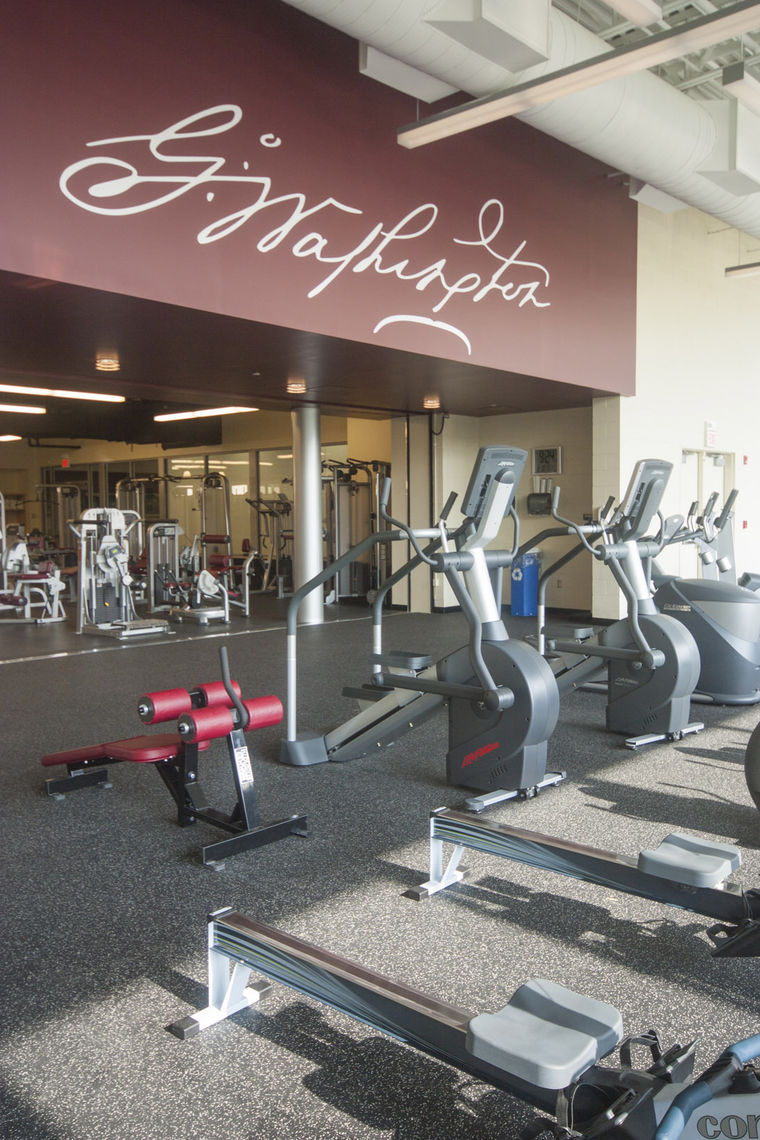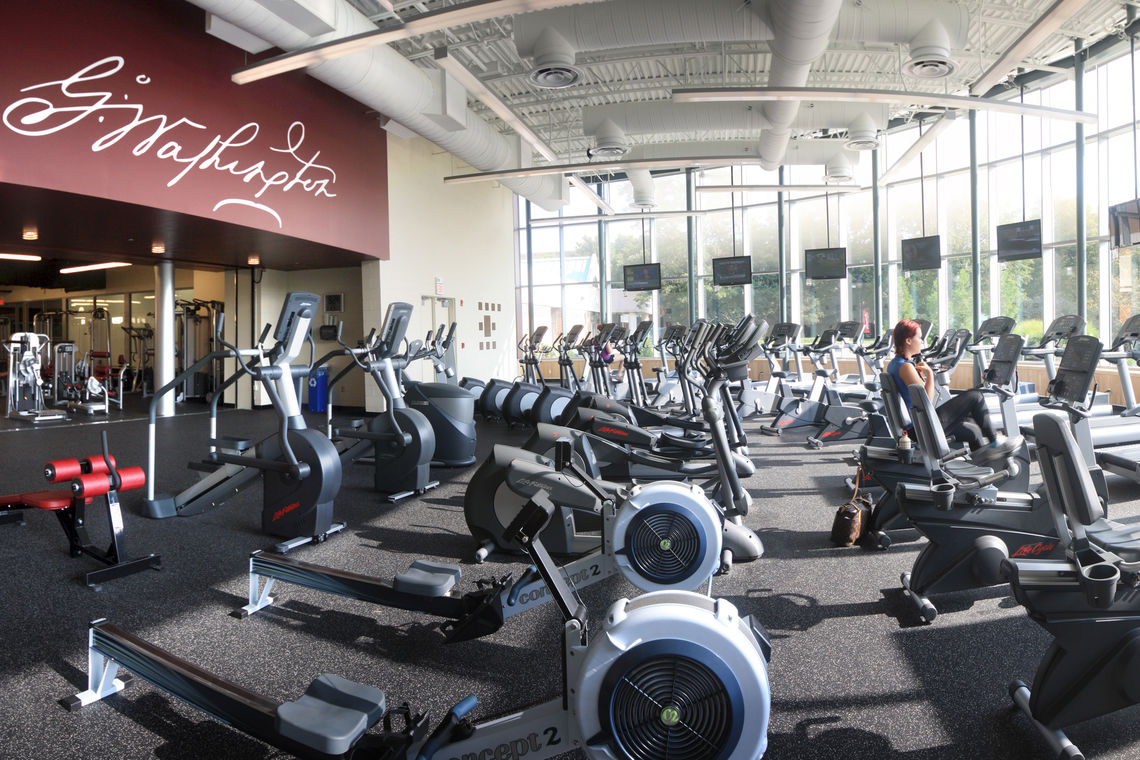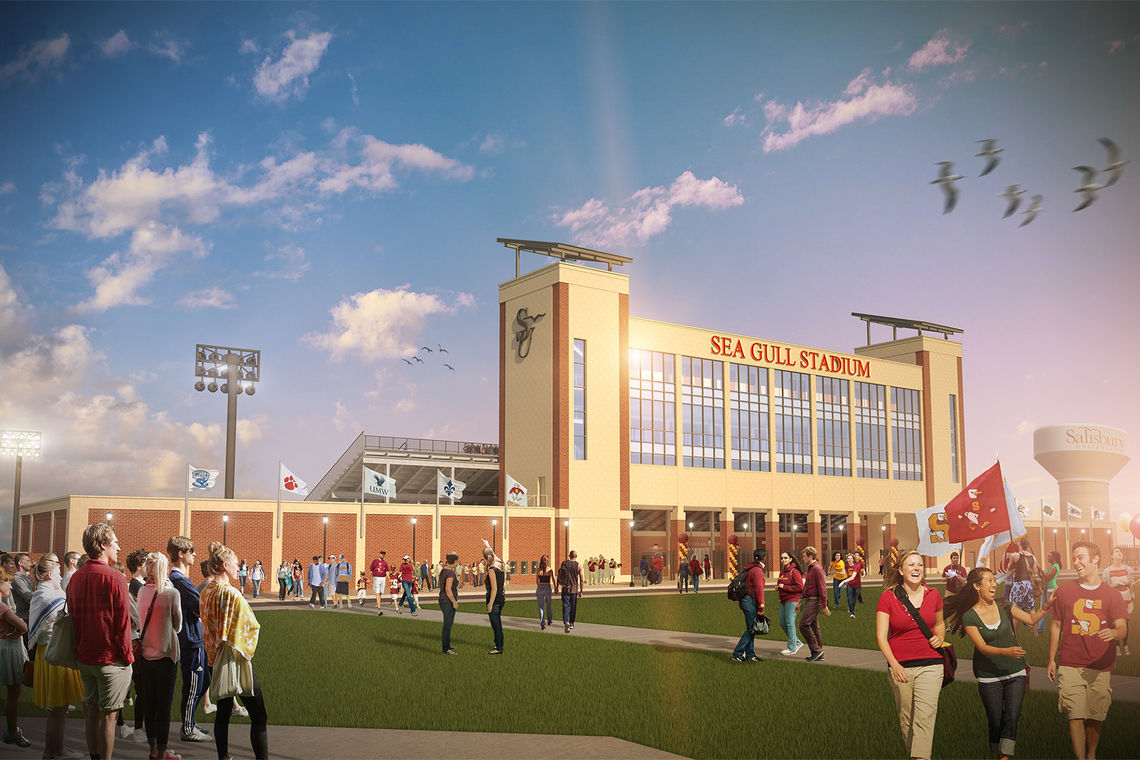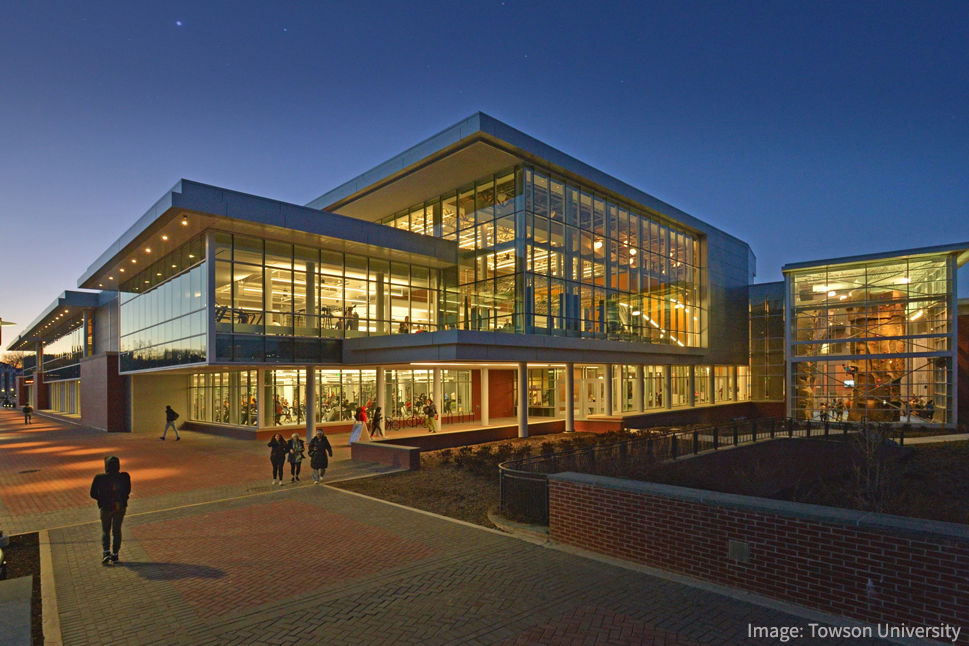As students on campuses throughout the country (varsity athletes and the general student population alike) are more concerned with physical health than ever before, making campus fitness centers an attractive, dynamic experience is essential for colleges and universities to remain competitive in today’s higher education marketplace. Campus fitness centers are taking their place alongside student centers, science centers, and libraries as hallmark components of a student-life experience. Campuses nationwide are renovating, updating and building new fitness centers in an effort to capitalize on the physical and health concerns of their students.
Bryan Matthews, Associate Vice President for Administrative Services and Director of Athletics for Washington College, has firsthand experience of this trend as we recently worked on the expansion of the college’s Johnson Fitness Center. We discovered that perhaps the central question when planning fitness spaces is: will the space be used for a combination of varsity athletes/teams and the general population or just one or the other? The answer makes a big difference in programming and therefore a big difference in design requirements. Every project needs careful consideration of this question.
Once the target audience is identified, questions then arise about how to tailor the facility to meet their specific needs. There are many design aspects to consider and options related to each. Through a collaborative effort, Bryan and I worked through these questions to create a fitness center with interior and exterior qualities commensurate with the college’s peer institutions. Today let’s consider these decisions related to fitness centers designed for use by the general student body.

Campus Connection
- Is the fitness center easily accessible?
- From the inside, is there a visual connection to the campus? Does the campus serve as the backdrop?
- For those on the outside, is there a visual connection to activities within?
- Does it visually represent the “healthy heart” of the campus?
Light & Climate
- With direct views to the outside, how will you manage the effect of the sun through the windows? A good solution is a moveable shade system that can be controlled from one central location.
- How will you control humidity, especially in the winter months when the temperatures outside are much cooler than the inside?
- During busier times of the day, the temperature inside the facility will rise. Assess the correct set points for busy v. quieter times of the day, considering the wide fluctuations in the HVAC load based on the number of people/activities.
Flexibility
- Spaces should include areas for floor work (abs, stretching, etc.), hard surfaces for weight balls, rubberized athletic flooring, and pads for the walls.
- Consider how to incorporate areas for alternative workouts like TRX. As trends in fitness are always changing, it’s important that spaces be flexible enough to adapt.
- Think about how you will separate the machines and the free-weights. If you put the machines too close to the free weights, will machine users be intimidated? By separating these two areas, you can also partition off noise, sights and smells.
- Mirrors are a key component of free-weight workouts. How will you position the free-weights to allow for them to be hung?
User Experience & Convenience
- Will each machine have its own TV so users can choose their entertainment or will the facility provide overhead TVs? Either way, plug-ins for iPods and iPhones are a must.
- Wifi is essential as users stream music and other entertainment through their phones.
- What kind of ambiance will the space have? Will popular music pump through the speakers or is that unnecessary as you predict many guests will use their own device?
- Lockers are essential, especially in the colder months. How will you make them easily accessible to users and will you provide the option for locks?
- Consider adding water fountains specifically for water bottles as many students favor reusable bottles.
Security
- To provide a safe environment, the facility should have one entrance/exit that leads to a central control station where users can check in and out.
- How will you create a visual connection to the general workout space so instructors have a visual connection to all areas in case of injury?
- Consider adding cameras to areas that are not directly visible.
While these questions may seem overwhelming at first, it’s much easier to address them in the beginning of the programming and design process. Ultimately, fitness centers that are easily accessible, create a favorable user experience, and are not intimidating, will be used the most by the students.




